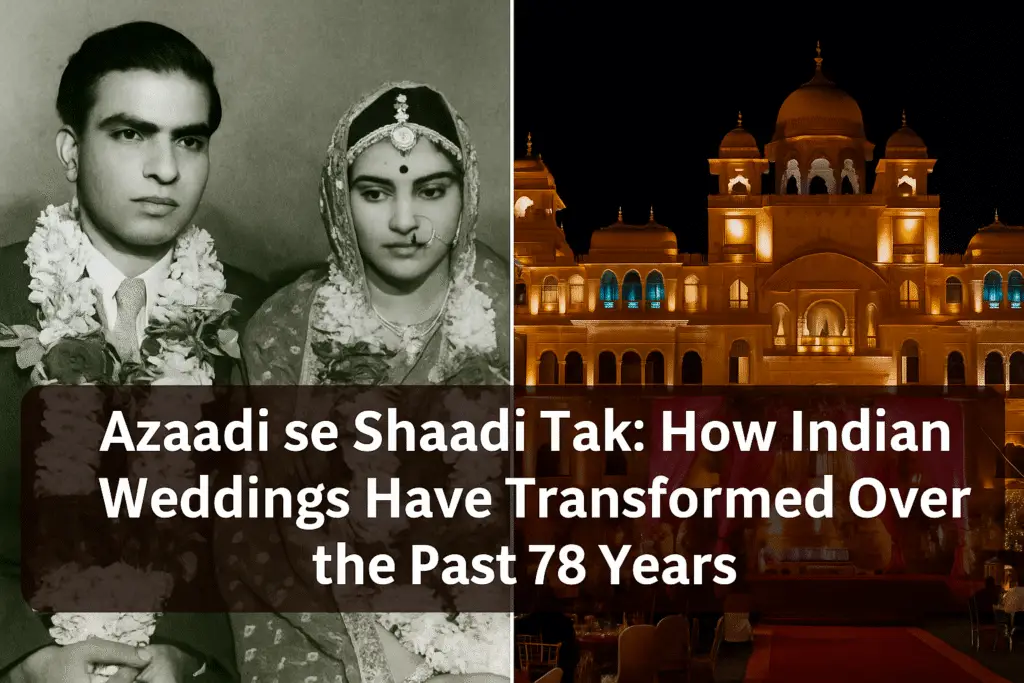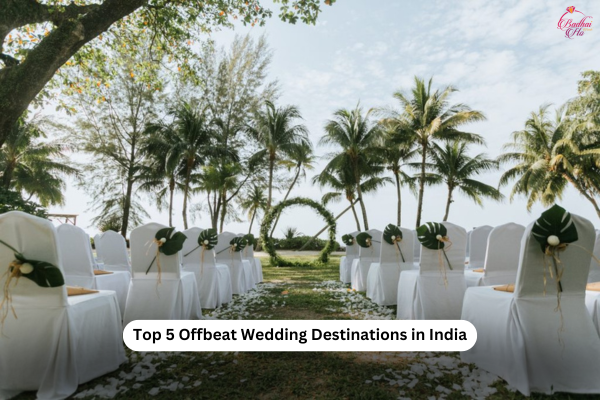As India celebrates 79 years of Independence, the spirit of Azaadi is not just about our freedom — it’s about how we’ve expressed our culture, traditions, and joy over the decades. And what better mirror of that transformation than the great Indian wedding? From the simple, soulful ceremonies of 1947 to today’s grandeur of multi-crore destination extravaganzas, the journey of Indian weddings is as vibrant as our tricolour itself.
The Early Era (1947–1960s): Simplicity, Tradition & Togetherness
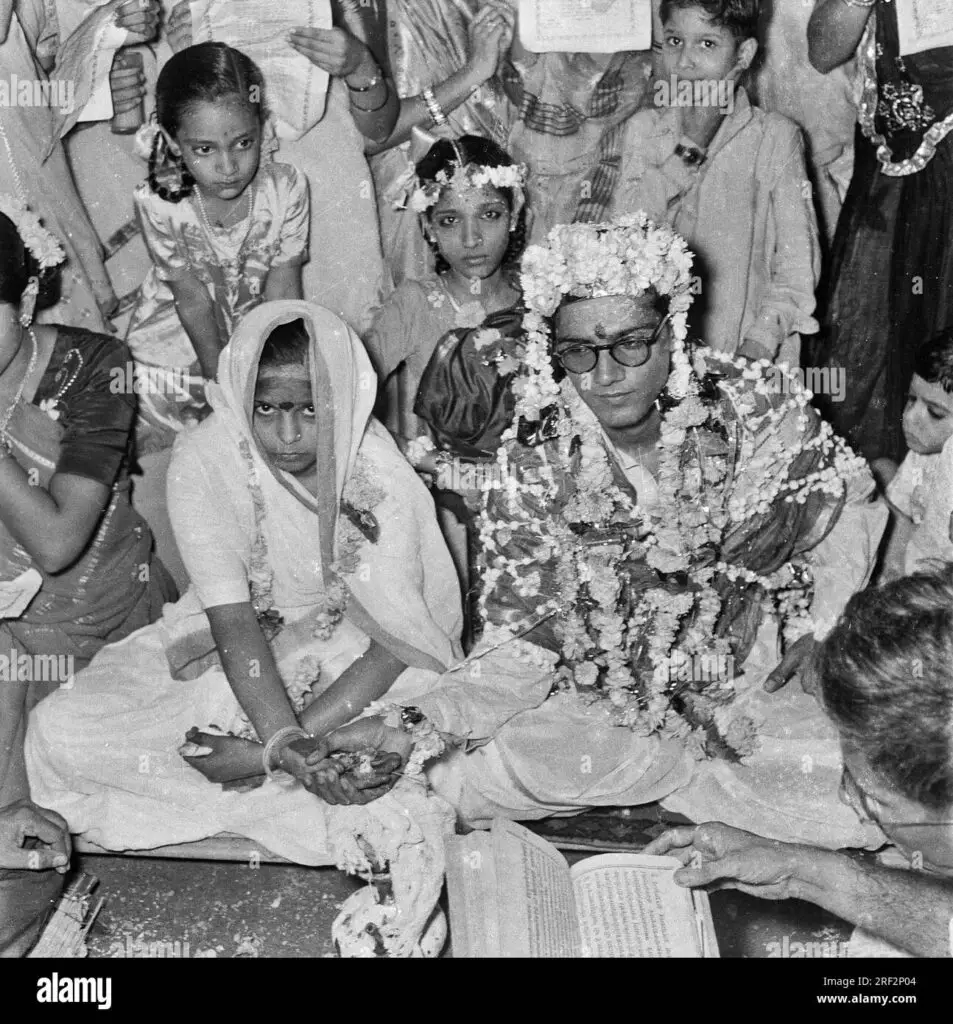
In the first decades after Independence, weddings were intimate community affairs — a celebration of union more than a showcase of wealth.
- Venues: Courtyards, ancestral homes, temples, and panchayat spaces were the most common.
- Attire: Brides wore heirloom sarees, often passed down for generations, while grooms wore dhotis, kurta-pajamas, or simple sherwanis.
- Décor: Fresh marigolds, banana leaves, rangoli, and handwoven pandals set the tone.
- Music & Food: Folk singers, traditional instruments, and home-cooked regional meals were the soul of the celebrations.
Photographs were rare — black-and-white portraits that captured the essence of a generation rebuilding the nation.
The 1970s–1980s: The Bollywood Touch
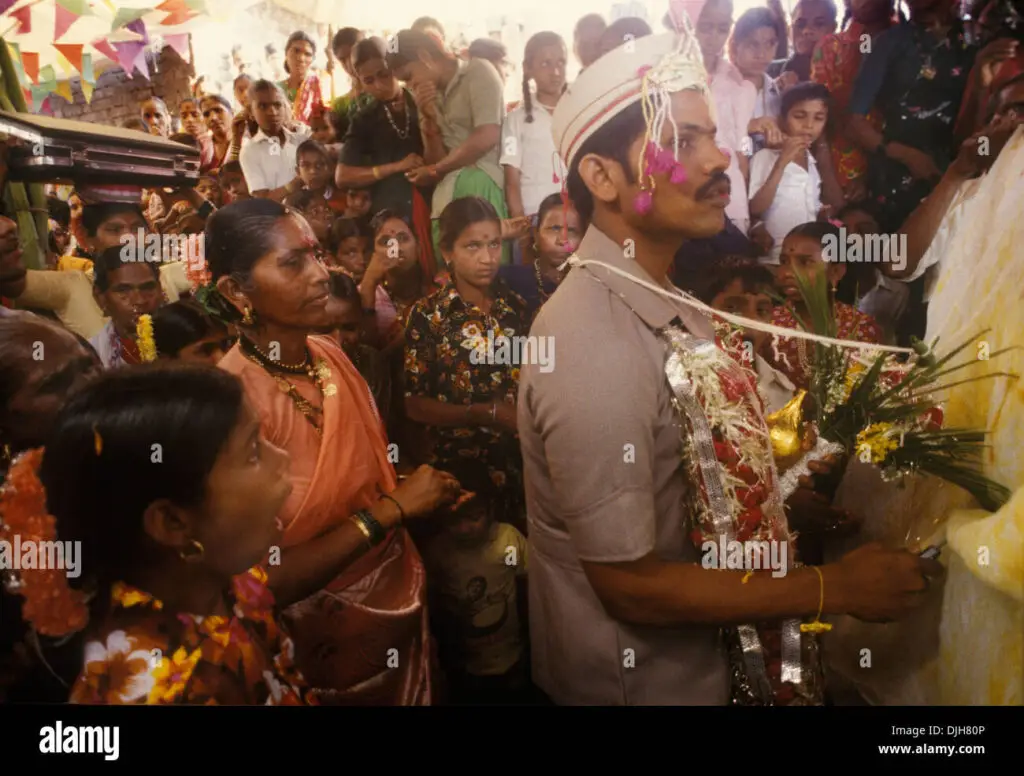
The silver screen began to influence how weddings looked and felt. Glamour entered the mandap.
- Fashion: Zari sarees, georgettes, chiffon drapes, and embroidered sherwanis took centre stage.
- Décor: Bright drapes, floral arches, and mirrored backdrops inspired by cinema sets.
- Venues: Marriage lawns and banquet halls emerged as popular spaces for larger gatherings.
- Entertainment: Hindi film songs replaced traditional folk tunes; live orchestras and DJ setups began to appear.
The 1990s–2000s: The Wedding Industry Boom
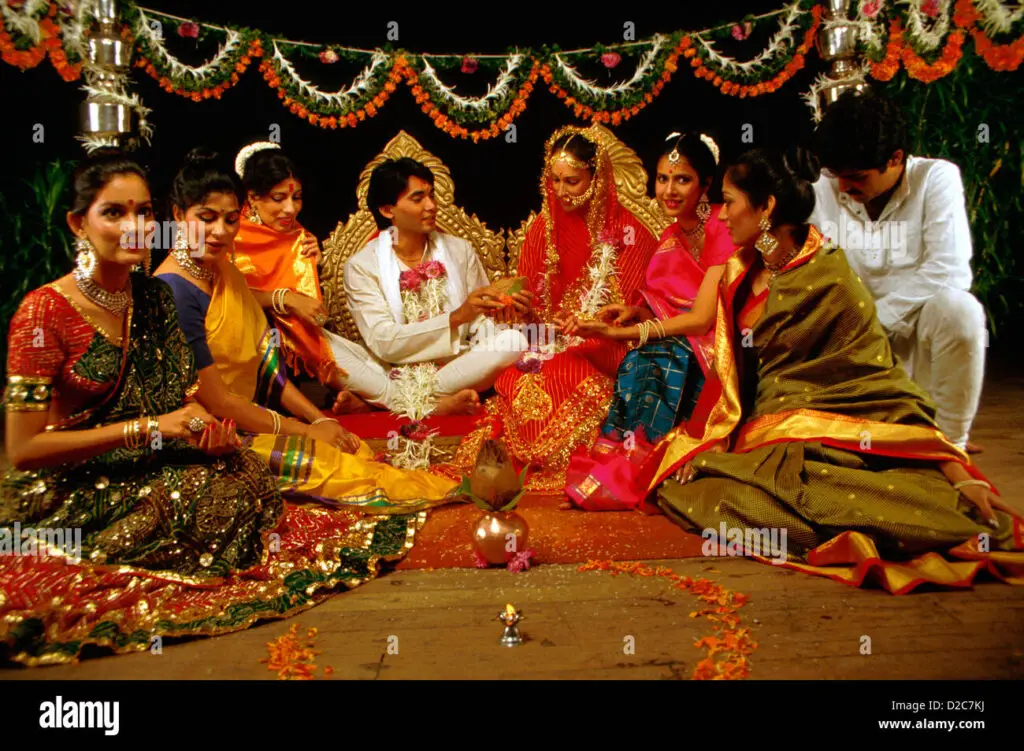
Economic liberalisation opened new possibilities. Weddings became larger, more personalised, and increasingly influenced by global trends.
- New Professionals: Wedding planners, choreographers, décor designers, and professional photographers became standard.
- Fashion: Designer lehengas and sherwanis by couturiers like Sabyasachi, Tarun Tahiliani, and Manish Malhotra.
- Technology: Video cameras, candid photography, and cinematic wedding films became must-haves.
- Food: Multi-cuisine buffets featuring everything from sushi to South Indian thalis.
The 2010s: The Destination Wedding Phenomenon
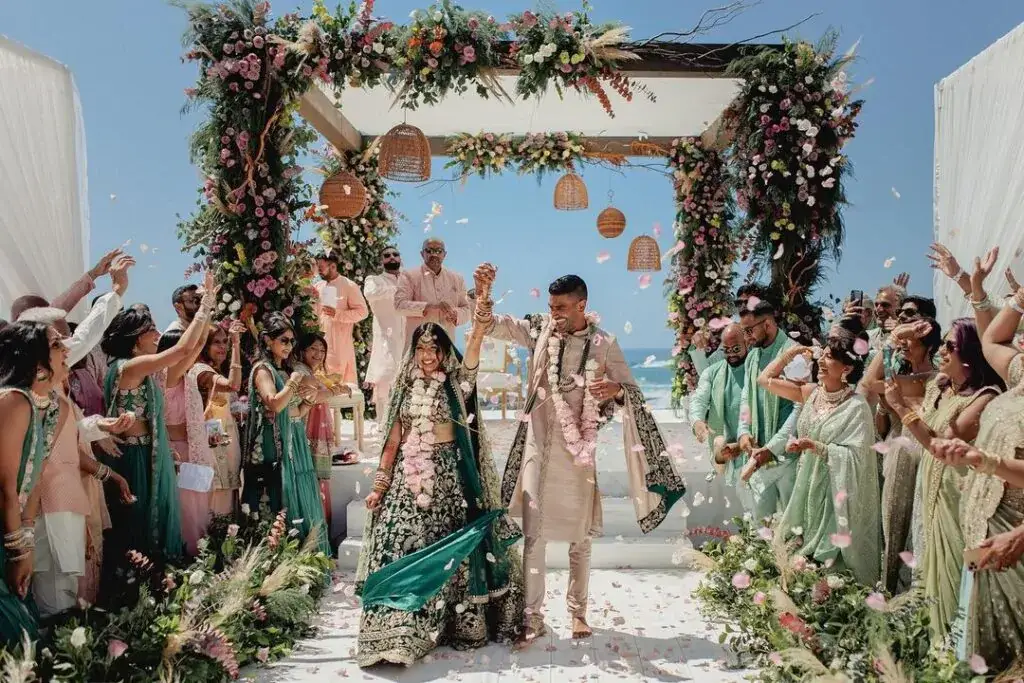
This decade saw India firmly positioned as a destination wedding capital.
- Locations: Rajasthan’s palaces, Goa’s beaches, Kerala’s backwaters, Himachal’s hills, and luxury resorts across India hosted global celebrations.
- Celebrities Set Trends: Virat Kohli & Anushka Sharma’s Tuscan vows, Priyanka Chopra & Nick Jonas’s Umaid Bhawan Palace wedding, and Deepika Padukone & Ranveer Singh’s Lake Como affair became benchmarks.
- Themes & Décor: Royal heritage, rustic chic, bohemian luxe — every detail told a personalised story.
2020–2021: Intimate & Innovative Celebrations
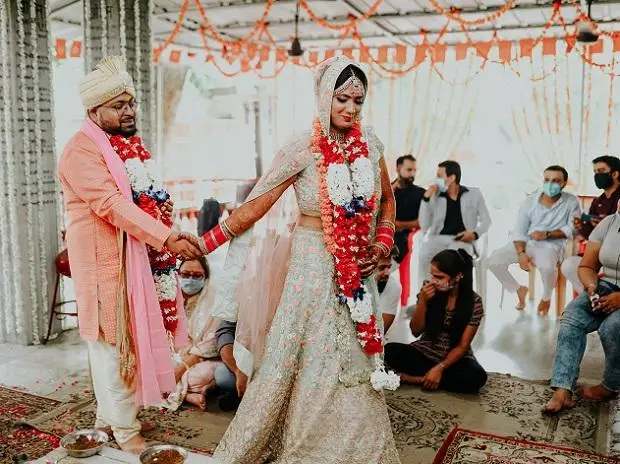
The pandemic redefined Indian weddings — smaller guest lists, bigger emotions.
- Guest Count: Capped at 50–100, often family-only.
- Live Streaming: Virtual attendance for guests across the globe.
- Décor: Minimalist yet impactful, with a focus on sustainability.
- Experience: More meaningful rituals, personalised gifts, and deep cultural symbolism.
2022–2025: Heritage Meets High-Tech
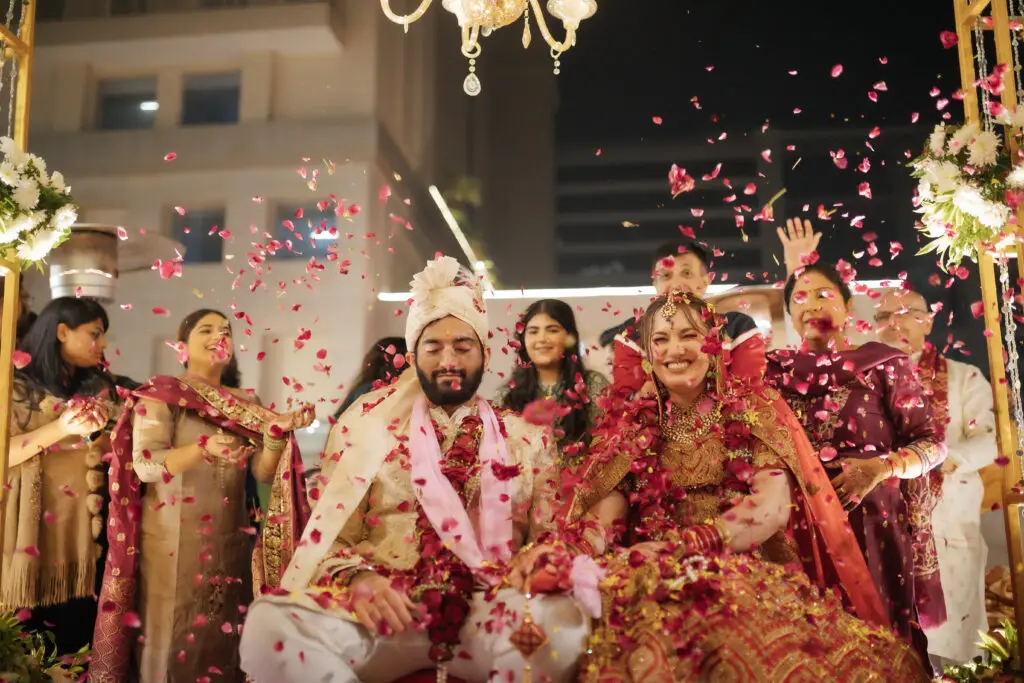
Today’s weddings are where tradition embraces innovation.
- Tech: Drone shows, projection mapping, AI-powered guest management.
- Luxury: Custom fragrance stations, couture bridal wear, designer hospitality lounges.
- Sustainability: Eco-friendly décor, zero-plastic policies, local-sourced catering.
- Fusion: Interfaith, intercultural, and cross-border weddings that merge customs beautifully.
Why “Wed in India” is a Celebration of Freedom
In 1947, Indian weddings were about family and faith. In 2025, they still are — but with a canvas far broader, richer, and more inclusive. Whether it’s a palace in Jaipur, a houseboat in Kerala, or a cliffside mandap in Rishikesh, weddings in India are now a journey of heritage, creativity, and freedom of expression.
As we celebrate Independence Day, let’s also celebrate the freedom to dream — and the joy of turning those dreams into weddings that generations will remember.

